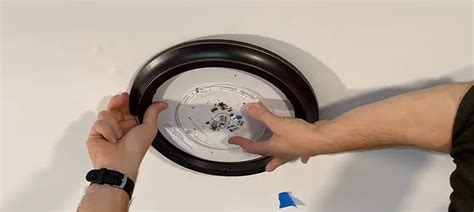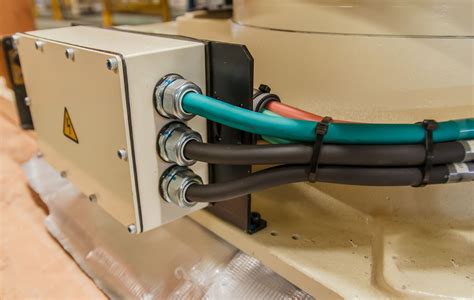do electrical junction boxes need to be secured Article 334.30 states that cables coming out of the junction boxes should be secured within 12 inches of the box in all boxes equipped with cable clamps. These cable clamps are not to be removed. 314.17 (C) states that cables must be secured to the receptacle box. Explore the basics of cutting, bending, and welding all in one condensed interactive format. Using FMA’s textbook "Metal Fabrication: A Practical Guide", the workshop follows the full process of metal fabrication. Training is .
0 · no junction boxes required
1 · need for junction boxes
2 · how to connect junction boxes
3 · electrical junction boxes
4 · electrical junction box installation
5 · electrical installation no junction box
6 · electrical boxes without junction box
7 · diy electrical junction box
Kentucky Designed & Made - Work the Metal
no junction boxes required
Article 334.30 states that cables coming out of the junction boxes should be secured within 12 inches of the box in all boxes equipped with cable clamps. These cable clamps are not to be removed. 314.17 (C) states that cables must be secured to the receptacle box.But some devices do not require a separate junction box. Usually, they have their .
need for junction boxes
Metal junction boxes always need to be grounded, whether you're using NM .
Plus fixtures (e.g., lights, ceiling fans) often need to be removed to access ceiling junction boxes. But the key is that normal access - e.g., replace a receptacle or switch, patch .
Additionally, you’ll need materials such as the junction box itself, cable connectors, and screws to secure the box in place. Safety gear, including gloves and safety glasses, is essential to protect yourself during the installation.
But some devices do not require a separate junction box. Usually, they have their own integrated boxes or enclosures for making the wire connections. Learn which devices don't need junction boxes, and when to .
Choose a location for your junction box that is easily accessible and complies with local electrical codes. The box should be mounted securely to a stud or joist, with its face flush to the wall surface. Junction boxes are not to have additional holes drilled into them for securing them to studs. The box you have shown can be used and mounted fairly secure if you take the time to cut the opening as small as possible so the box .
Metal junction boxes always need to be grounded, whether you're using NM (non-metallic) plastic-sheathed cable or metallic cable. Metallic cable is self-grounding, as long as the cable is properly secured to the box. NM cables .
how to connect junction boxes
Make sure the electrical box is level and plumb. A level and plumb box will ensure a secure installation and make it easier to connect the wires. Secure the box firmly to the stud using the appropriate fasteners. Use the . Junction boxes must be grounded to provide a path for fault current to return to the source and to prevent electrical shock. Using an approved grounding method, you must connect the grounding conductor to the junction . My point is that the box is designed to be accessible through the light opening which makes them so user friendly. If you had to get in the attic to access the junction box or to secure it you’d never use the flat cans you stick . Article 334.30 states that cables coming out of the junction boxes should be secured within 12 inches of the box in all boxes equipped with cable clamps. These cable clamps are not to be removed. 314.17 (C) states that cables must be secured to the receptacle box.

Plus fixtures (e.g., lights, ceiling fans) often need to be removed to access ceiling junction boxes. But the key is that normal access - e.g., replace a receptacle or switch, patch in a new cable to a junction box to power something else, etc. - . Additionally, you’ll need materials such as the junction box itself, cable connectors, and screws to secure the box in place. Safety gear, including gloves and safety glasses, is essential to protect yourself during the installation. But some devices do not require a separate junction box. Usually, they have their own integrated boxes or enclosures for making the wire connections. Learn which devices don't need junction boxes, and when to install junction boxes.
Choose a location for your junction box that is easily accessible and complies with local electrical codes. The box should be mounted securely to a stud or joist, with its face flush to the wall surface.
Junction boxes are not to have additional holes drilled into them for securing them to studs. The box you have shown can be used and mounted fairly secure if you take the time to cut the opening as small as possible so the box tabs have more drywall to support it.
Metal junction boxes always need to be grounded, whether you're using NM (non-metallic) plastic-sheathed cable or metallic cable. Metallic cable is self-grounding, as long as the cable is properly secured to the box. NM cables are not self-grounding. Make sure the electrical box is level and plumb. A level and plumb box will ensure a secure installation and make it easier to connect the wires. Secure the box firmly to the stud using the appropriate fasteners. Use the correct screws . Junction boxes must be grounded to provide a path for fault current to return to the source and to prevent electrical shock. Using an approved grounding method, you must connect the grounding conductor to the junction box. My point is that the box is designed to be accessible through the light opening which makes them so user friendly. If you had to get in the attic to access the junction box or to secure it you’d never use the flat cans you stick to the traditional styles.
Article 334.30 states that cables coming out of the junction boxes should be secured within 12 inches of the box in all boxes equipped with cable clamps. These cable clamps are not to be removed. 314.17 (C) states that cables must be secured to the receptacle box. Plus fixtures (e.g., lights, ceiling fans) often need to be removed to access ceiling junction boxes. But the key is that normal access - e.g., replace a receptacle or switch, patch in a new cable to a junction box to power something else, etc. - .
Additionally, you’ll need materials such as the junction box itself, cable connectors, and screws to secure the box in place. Safety gear, including gloves and safety glasses, is essential to protect yourself during the installation. But some devices do not require a separate junction box. Usually, they have their own integrated boxes or enclosures for making the wire connections. Learn which devices don't need junction boxes, and when to install junction boxes. Choose a location for your junction box that is easily accessible and complies with local electrical codes. The box should be mounted securely to a stud or joist, with its face flush to the wall surface. Junction boxes are not to have additional holes drilled into them for securing them to studs. The box you have shown can be used and mounted fairly secure if you take the time to cut the opening as small as possible so the box tabs have more drywall to support it.
open a junction box above the t bar
Metal junction boxes always need to be grounded, whether you're using NM (non-metallic) plastic-sheathed cable or metallic cable. Metallic cable is self-grounding, as long as the cable is properly secured to the box. NM cables are not self-grounding.

Make sure the electrical box is level and plumb. A level and plumb box will ensure a secure installation and make it easier to connect the wires. Secure the box firmly to the stud using the appropriate fasteners. Use the correct screws . Junction boxes must be grounded to provide a path for fault current to return to the source and to prevent electrical shock. Using an approved grounding method, you must connect the grounding conductor to the junction box.
electrical junction boxes
electrical junction box installation
electrical installation no junction box
$55.99
do electrical junction boxes need to be secured|electrical installation no junction box